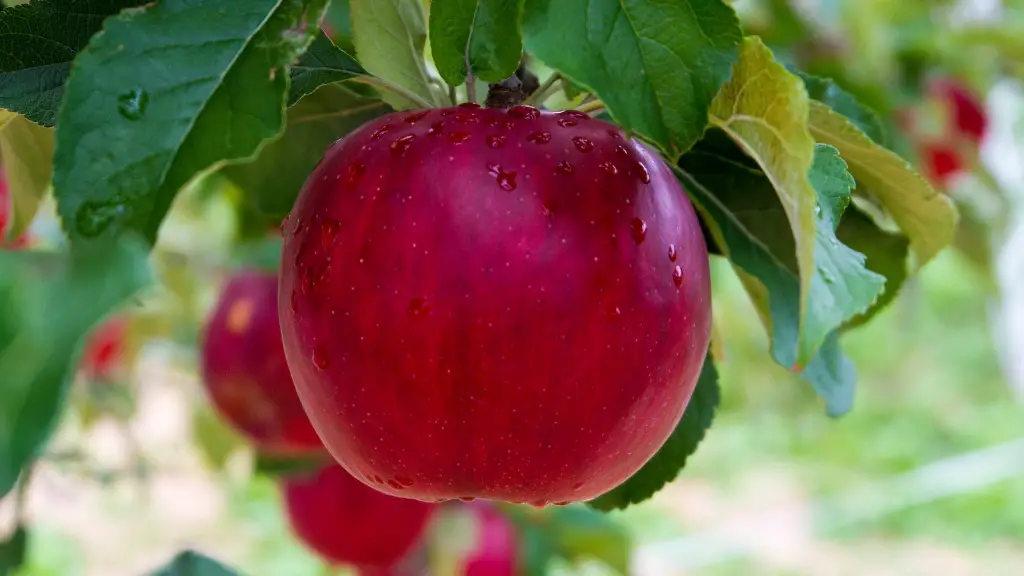It is possible to grow a lemon tree indoors, given the right environment and care. The key is to provide the tree with bright light, well-drained soil, adequate water, and occasional fertilization. The temperature should not dip below 50F, and it is essential that the tree is kept in a humidity-controlled environment. By following these steps, lemon trees have been known to produce fruits in as short as two years.
Lemon trees usually prefer direct sunlight, as much as 8 hours per day. If you’re unable to provide your tree with direct sunlight from an outdoor space, artificial lights or natural light from a nearby window can be used as a substitute. Natural sunlight is generally stronger and will provide your tree with better long-term benefits, but either option is viable.
To ensure optimal growth and development, soil requirements should be taken into consideration. The best soil for growing a lemon tree indoors is a light and well-draining mixture. Adding organic material to the soil, such as compost or peat moss, is recommended as it will increase water retention while decreasing water needs. To further increase the water retention, a layer of mulch can be added to the top of the soil and will help to keep roots moist. Additionally, outdoor soil should never be used in indoor planters.
Watering the lemon tree should be done regularly and will depend on several factors, such as air temperature, soil type and dryness. A general rule of thumb is to keep the soil moist but never saturated. A watering can with a long-reach head is often the best choice and should be used to douse the tree until the soil is damp. Consider using a slow-release fertilizer with nitrogen, phosphorus, and potassium every two months during the growing season. This will give your tree the nutrition it needs for growth and fruit production.
Lemon trees are also sensitive to cold, and it is important that the temperature never dips below 50F (10C). Placing the tree near a window where it can receive natural light and warmth is ideal, but be sure to close the window to keep exterior cold away. If you must keep the tree away from a window, you may consider using space guidance or a cooling fan to create consistent temperatures.
Finally, humidity is an important factor in keeping a lemon tree healthy. Consider purchasing a humidifier to keep the air surrounding the tree humid. If the tree is placed near a window or outdoor area, be sure to use a plastic cover or glass to retain moisture. Aim for a humidity level between 50% and 65%.
Choosing a Pot
When it comes to choosing a pot for your lemon tree, size is an important factor. The size should be large enough to allow the tree to grow to full size and should also have adequate drainage holes. Clay or ceramic pots are often the best choice as they are porous and allow excess moisture to escape. Be sure to use soil specifically created for indoor plants and replace the soil every two to three years.
Pruning and Maintenance
Pruning and frequent maintenance of your tree are essential in keeping it healthy and promoting fruit production. As the tree grows, thinning out the branches should be done to increase air circulation and create an overall even shape. Pruning any dead branches is also necessary. Lemon trees will sometimes produce suckers, which should be removed as soon as they appear to reduce stress on the main trunk.
Fruit Production
To ensure that your lemon tree produces fruit, do not over-fertilize and make sure to keep the soil moist. Pruning the tree regularly and thinning out any weak branches will allow the tree to focus its energy on vigorous growth and long-lasting fruit production. Additionally, pollination can be an issue with indoor lemon trees, so it may be helpful to use a Q-tip or small paintbrush to gently pollinate the flowers.
Potential Pests and Disease
Pests and disease can be difficult to manage with indoor lemon trees and should be considered when growing your tree. Common pests include aphids, scale, whitefly, and spider mites, and these can be addressed with an insecticide or neem oil. Most disease related to lemon trees can be easily prevented by providing the tree with adequate nutrition, light and water. If your tree does become affected by disease, consult with a local nursery to identify the issue and find the best course of treatment.
Determining When to Harvest
To determine when to harvest the fruit, wait until the fruit is fully mature and a yellow hue has developed. The smell of the lemon should become strong and the fruit should be firm. If you shake the tree and the fruit does not fall off, this usually indicates that it is ready for harvest. Once harvested, the fruit will keep in the refrigerator for up to several weeks.
